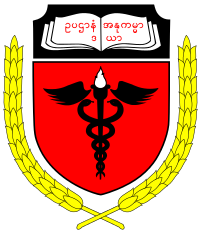Department of Chemistry
The University of Medicine, Magway
Give us a call
11111111
Lectures |
|
|
|
Inorganic Chemistry 1. Atomic structure 1.1 Elements and atoms 1.2 The structure of an atom 1.3 Number of nucleons 1.4 Isotopes and uses of isotopes 1.5 Electrons in atoms 1.6 Chemical bonding 1.7 Electronegativity 1.8 Weak electrostatic bonds 1.9 Bioinorganic chemistry
Physical Chemistry 1.Gaseous State 1.1 The nature of gases 1.2 Deviations from ideal behaviour 1.3 Van der Waal's equation 2.Solutions 2.1 Solubilities of gases 2.2 Method of expressing the concentration of solutions 2.3 Colligative properties of dilute solutions 2.4 Abnormal colligative properties of dilute solutions 2.5 Common use of dilute solutions 3.Acid-Base Theories 3.1 Acid-base theories 3.2 Dissociation of weak acids and weak bases 3.3 The pH of solutions 3.4 Buffer solution 3.5 Blood buffer system 4.Elementary Thermodynamics 4.1 Introduction to study of thermodynamics 4.2 State function and path function 4.3 First law of thermodynamics 4.4 Work of the pressure and volume type 4.5 Enthalpy of a reaction 4.6 Reversible and irreversible processes 4.7 Heat change at constant volume and constant pressure 4.8 Entropy 4.9 Spontaneous and non-spontaneous processes 4.10 Free energy 5.Chemical Kinetics 5.1 Chemical kinetics 5.2 Molecularity 5.3 Order of reaction 6.Colloidal State 6.1 Colloid 6.2 Differences between true solution, colloidal solution and suspension 6.3 Phases of colloidal systems 6.4 Lyophilic and lyophobic sols or colloids 6.5 Purification of sols 6.6 Properties of sols Organic Chemistry 1.Aliphatic Compounds 1.1 Monohydric alcohols 1.2 Alkyl halides 1.3 Ethers 1.4 Aldehydes and ketones 1.5 Monocarboxylic acids 1.6 Aliphatic amines 2.Aromatic Compounds 2.1 Aromatic hydrocarbons 2.2 Aromatic nitro compounds 2.3 Aromatic sulphonic acids 2.4 Aromatic halogen compounds 2.5 Aromatic amino compounds 2.6 Diazonium compounds 2.7 Hydroxy derivatives of aromatic hydrocarbons 2.8 Aromatic acids 2.9 Hydroxy aromatic acids 3.Stereo Chemistry 3.1 Structural isomerism 3.2 Stereoisomerism 4.Amino Acids and Proteins 4.1 Classification of amino acids and their structures 4.2 Synthesis of amino acids 4.3 Properties of amino acids 4.4 Classification of proteins 4.5 Hydrolysis of proteins 4.6 Properties of proteins 4.6 Uses of proteins 5.Carbohydrates 5.1 Nomenclature 5.2 Classification of carbohydrates 5.3 Monosaccharides 5.4 Disaccharides 5.5 Polysaccharides 6.Lipids 5.1 General properties of lipids 5.2 Classification of lipids 5.3 Fatty acids 5.4 Uses of fats in the body
|
Text 2 |
